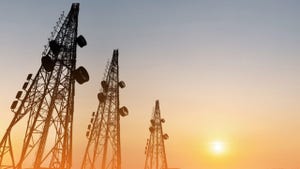Overcoming the challenges of subsea cable route planning
One of the initial challenges that installers of subsea cables must contend with is the practice of planning and installing cable routes.
April 27, 2022

Telecoms.com periodically invites expert third parties to share their views on the industry’s most pressing issues. In this piece Kashyap Mehta, VP Business Development – Strategic Accounts at TEOCO, explores the complexities of deploying subsea cables.
Today, high-speed telecommunications form the cornerstone of modern societies: from instantaneous financial transactions, to rolling 24-hour news updates, undersea cabling is the lynchpin of many aspects of our connected word that many people remain unaware of. Despite this, undersea cables are an integral part of the comprehensive infrastructure that drives the global economy. In fact, just over 95% of the world’s international data traffic is carried through fiber-optic cables that run across ocean floors. Today that includes the connectivity that links almost all of the world’s data centers, where servers process the data that lets us experience the internet and its myriad of applications. Many key aspects of modern society rely on this vital network: international banking, trade and e-commerce, news media and entertainment, as well as enabling the collaboration infrastructure for academic research, national security and more.
Planning where and how to deploy a submarine cable presents numerous challenges. First and foremost, given the complexity and costs involved in the deployment and maintenance of a submarine cable, a ‘first time right’ principle in the planning process is an imperative because planners cannot afford to make changes once the equipment is deployed as it is prohibitively expensive to do so. From a business perspective the use of automated planning tools doesn’t just support the ‘first time right’ principle, it also accelerates the planning process which would otherwise take months to execute due to the number of constraints to be considered. Inaccurate planning is not an option. This leads to careful analysis of restrictions from physical issues to challenges due to human presence and activity. A planning process with so many variables is both extremely time-consuming and labour-intensive, particularly as planners need to manually handle adjustments to their working plan.
The answer to overcoming some of these challenges lies in the ability to automate the submarine cable route planning and optimization process. Software applications have demonstrated their ability to analyze data correlations to a level of complexity and depth that supersedes human capacity—as a result, it provides valuable assistance in assessing the optimal solutions for cable route planning.
A testing environment
One of the initial challenges that installers of subsea cables must contend with is the practice of planning and installing cable routes. In the areas where the terrain is flat and accessible, planning poses less of problem as the practicalities are more straightforward and easier to manage. In regions where the terrain is rough—think undersea mountain ranges, for instance—it’s a different story. When extreme weather conditions are added to the mix, planners face almost insurmountable issues: shifting tides, strong tidal waves, frozen winters, and storms. And those are only the physical environmental characteristics that need to be considered—geo-political instability and human activity create an even more complex picture that has to be factored into a planner’s risk assessment analysis. In the face of such issues, time, money and expertise are essential to collect accurate data and precise measurements for determining the ideal fiber optic route.
The next challenge comes with the intricate task of physically laying the fiber: the combined efforts of a small fleet of ships including surveying vessels and specialized cable-laying ships make use of a range of undersea technology to bury cables beneath the seabed. In some places they are tasked with laying relatively fragile cable at depths of up to four miles. It is then a slow and sustained effort to install the thousands of miles of cable. In addition to loading the ships with cables, which itself consumes a significant amount of time, heavy machinery and engineering is needed to accurately and precisely lay cables at a rate of up to 200 kilometers per day.
Once the cables are installed and properly placed the work continues. Submarine cables are engineered to last up to 25 years, though the reality means they are often retired earlier. Over the course of many years, environmental factors degrade the cable: erosion caused by rocky surfaces, landslides, earthquakes, saltwater intrusion, and even unintended human interference like fishing can contribute to cable damage resulting in the disruption of data flow. It is even not unheard of for pernicious actors to deliberately sabotage or purposely damage cables. In all, around 150 to 200 cable faults are detected each year globally. With all of these complicating factors at play, planners need to take into consideration a variety of constraints and eventualities to determine the fastest, most reliable and cost-effective submarine cable deployment plan to ensure that the cables have longevity.
Getting it right – first time
Given the challenges surrounding the deployment and installation of cables, and the cost of maintenance and repairs, it is imperative that planners get it right first time. That way they can protect their investment and ensure that the assets they deploy remain fully operational for 20 plus years. One way to achieve this goal is by using an automated submarine cable route planning tool. Solutions that make use of the latest machine learning techniques to achieve the fastest, most reliable, and cost-effective submarine cable deployments possible are the best determinant of undersea routes.
By collecting and analyzing data relating to the psychical topography of undersea terrain, as well as other essential factors including natural disaster risks, weather forecasts, the location of existing cables and pipes, areas of marine heritage, and regions of geo-political instability, a greater awareness of the threat landscape helps to eliminate the time-consuming process of manually planning routes, in order to find a safe home for valuable submarine cables.
Planners can also go one step further by engaging an analytics solution designed to avoid subsea cable damage that uses advanced heuristics and AI/ML algorithms to continuously monitor and assess the risk factors that could potentially compromise cables over time. This then allows potential hazards to be quickly identified and flagged, minimizing the risk of damage once it is installed.
The future of subsea cable route planning
It is impossible to overstate the importance of undersea cables—not only are they the connector of people and societies, but they also help to drive the world economy. Ensuring that these vital infrastructures are easily deployable and protected from damage is critical. Planning, optimization, and maintenance tools are key to avoiding disastrous and costly service outages. Taking all of this into account, telecommunication and web-scale companies should persevere with their efforts to overcome the challenges of submarine cable installation and optimization by considering more advanced automated and AI/ML enabled solutions that simplify and accelerate the process while logically determining the optimum route.
 Kashyap Mehta is the VP Business Development, Strategic Accounts at TEOCO. He is responsible for the acquisition of new customers, existing customer retention and driving innovation and expansion. He is passionate about analytics, assurance and optimization solutions.
Kashyap Mehta is the VP Business Development, Strategic Accounts at TEOCO. He is responsible for the acquisition of new customers, existing customer retention and driving innovation and expansion. He is passionate about analytics, assurance and optimization solutions.
Read more about:
DiscussionAbout the Author
You May Also Like


.png?width=300&auto=webp&quality=80&disable=upscale)







.png?width=300&auto=webp&quality=80&disable=upscale)


_1.jpg?width=300&auto=webp&quality=80&disable=upscale)